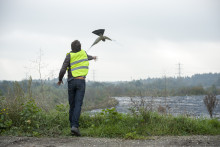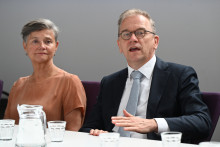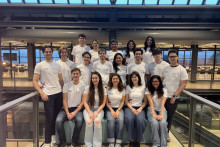Back home in Nairobi, he’d wake up at 5am in the dark to walk to the public transportation system which consists of mini-vans and no buses. ‘If I’d leave my house a half hour too late, I’d be stranded in traffic and be two hours late to work. You never know when it’s coming and you don’t know what the driver will charge you. You yell on the street: “Hey, hey, hey, me. And then you jump in the van.’
The researcher worked and completed his undergraduate studies in urban and regional planning at Maseno University in 2006, and directly worked for the Government of Kenya as an intern, under the Ministry of Lands, Physical Planning Department. One his bosses in the government decided to resign from his post and started a private physical planning consultancy firm Ecoplan Kenya, where Gachanja worked as an associate consultant. ‘I worked on day- to- day assignments involving the application of spatial data and information. We serviced a wide range of clients both in the public and private sector.’
Coming here, he experienced the precise efficiency of the Dutch and how it differed from Africa. ‘If I want to get in Rotterdam by 2:30pm then I catch my train and I get there in Rotterdam by 2:30pm. That’s the Dutch way. The organization of people, design of buildings, and the level of efficiency are amazing. I was looking at the way the bike system works. I said, “Ok, there are separate bike lanes, separate from the car traffic. Pedestrians are also provided for and people traveling in wheelchairs have special places where the pavement is designed to help them to get around. There are sensors on the bike paths to signal the lights. So those things, I’ve come to appreciate.’ He’d never left his country before, it was a cultural shock. ‘Look at this, everything is whoooh, whoooh. You go to the toilet and it flushes, and you say, who did that? You take a train, and you get there precisely on time.’
Gachanja set out to evaluate the merits of the four step transport model (FEM), using the case of Istanbul. He opens up his laptop computer in the Horst building, showing the massive city grid of Istanbul and revealed a matrix, ‘You can see the transportation network and all the connecting roads,’ he said. ‘In Istanbul, the areas nearest the waterways produce the most trips but people are moving all over the city. You try to discover the reality of the situation through the use of models. Through his research, he came to the conclusion that the sequential approach of the FEM model offers no feedback from one step to the other and sometimes doesn’t represent reality.
In Nairobi, most of the people in the government are still using paper maps to plan cities. On the other hand, Gachanja notes the competitive nature of the private sector that uses the latest technologies. ‘Urban planners can more effectively target and put resources where they are needed. Slums in Nairobi, for example, have illegal settlements. Implementing science and using modern technologies can show where the greatest need is, the hot spots of poverty and where the distances to schools and hospitals are substantial. People are living in swamp areas. You want to make urban planning fit the needs of society.’
 |
| James Gachanja: ‘Science is not bias nor is it based on tribal beliefs or religion. It’s science. It’s facts. If you do something then something will happen.’ (Foto: Gijs van Ouwerkerk) |







